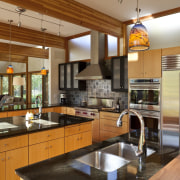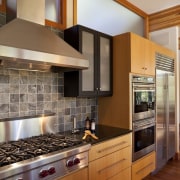Friendly disposition
This kitchen connects well with adjoining living spaces, while ensuring an appreciation of the surrounding woodlands
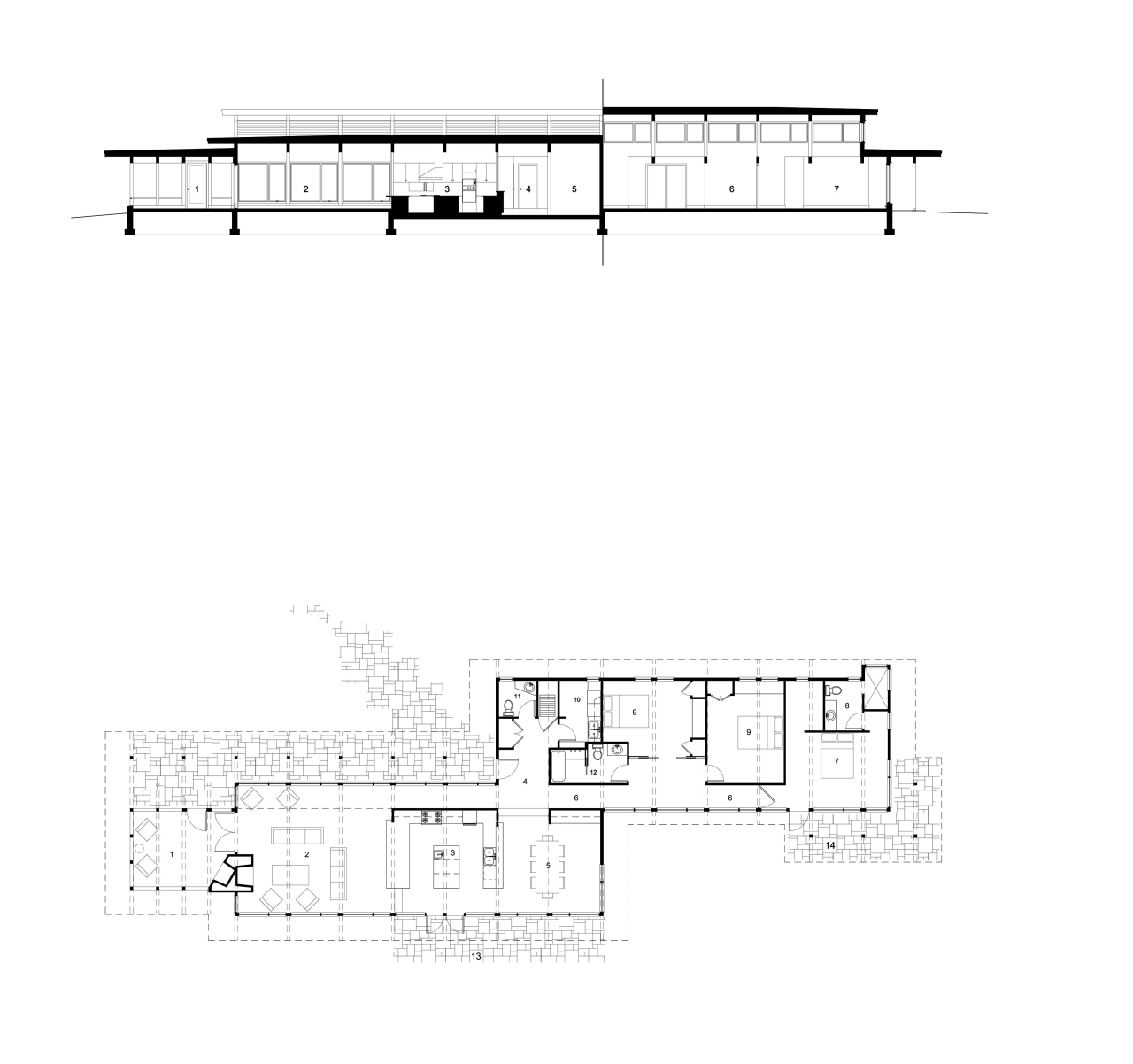
Open-plan kitchens are naturally designed to complement neighboring spaces. To achieve harmony, it's important to ensure that cabinetry and appliances don't obscure views across the interior, or out to the landscape.
This kitchen was designed by the architect of the whole house, Katherine Hillbrand, with material choices by the owners Karen Neset and David Estreen. The final layout and detailing was by kitchen designer Mary Jane Pappas.
The residence comprises two pavilions connected by a long corridor. Set in pristine woodlands, the house is all windows and wood framing, with views enjoyed from throughout the open-plan spaces.
The kitchen is centrally positioned in the living pavilion, with the dining area a few steps away in one direction and the living area enclosing the workspace on the other side, says Katherine Hillbrand.
"The house follows the slope of the land and this impacts on the kitchen. There are two steps down into the kitchen and dining area from the living areas, and this offers several advantages."
Placing the kitchen below the living space gives it an individual, intimate identity, although at a glance, it still appears to be level with the living and family areas. It also allows uninterrupted views from the kitchen down the length of the pavilion.
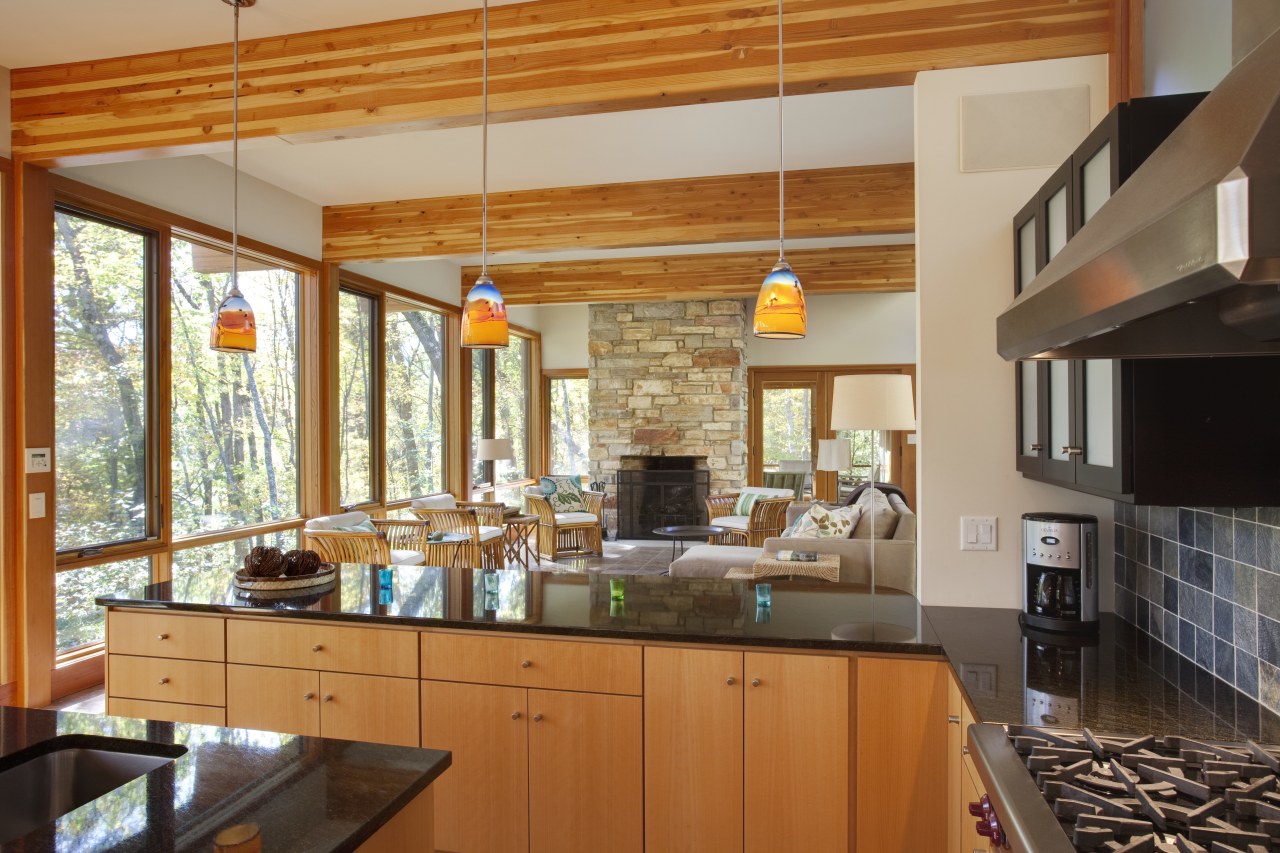
The functionality of the kitchen is improved as well. On the living area side, the countertop is at normal seating height avoiding the need for bar stools at the breakfast bar.
What's more, the lowered kitchen is on the same level as the woodlands beyond the French doors, creating a seamless indoor-outdoor flow.
"In keeping with the understated design, I chose a frameless cabinet style with emphasis on undercounter storage and a bare minimum of above-counter cabinetry that could impede sightlines across the interior.
"First and foremost, the kitchen is oriented toward the landscape," says Hillbrand.
If the kitchen responds to its environment in physical terms, it also looks the part in terms of its materials.
"All the window frames and the kitchen and dining area floors are wood, in keeping with the setting," says Neset. "We wanted the same natural aesthetic to continue in the kitchen, which is why we chose European beech for the cabinetry and specified a clear polyurethane finish."
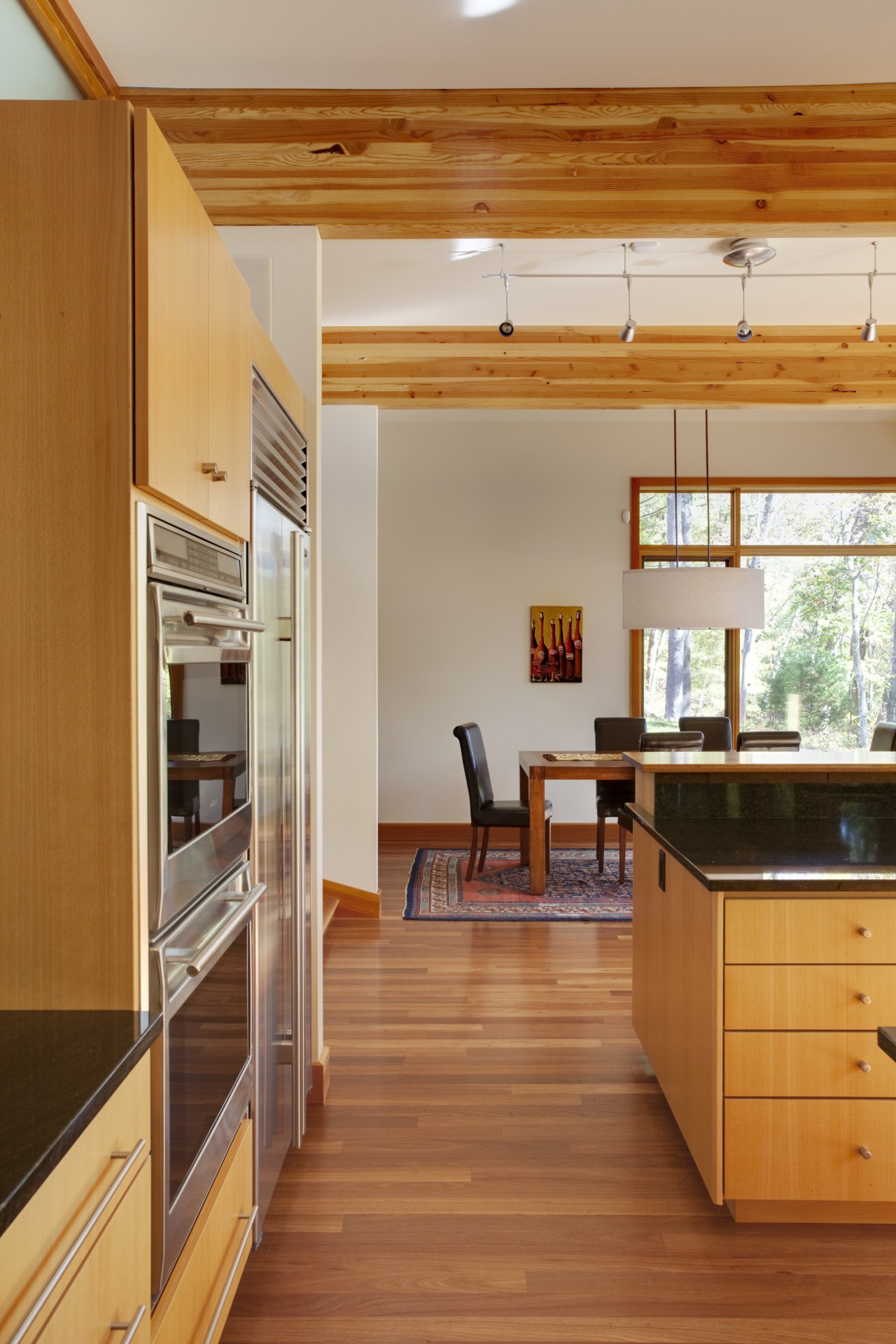
The kitchen and dining area floor is in Sydney Blue Australian cypress and the raised counter on the side island is in the same material. The owners chose a green granite for the countertops, which they say takes on an even more appealing hue when the sun shines on it.
"We selected slate tilework for the backsplash to pick up on the green of the counters, the metal appliances and the limestone tiles on the floor in the living area," says Estreen.
In the initial layouts, the kitchen was designed to have a peninsula counter along each side, says designer Mary Jane Pappas.
"I revised the peninsula nearest the front door to an island to allow unimpeded access to the kitchen from this high-traffic point. The refrigerator is set in this corner, so it can easily be used without disturbing the chef.
"The family loves to cook, often with more than one chef in the kitchen at once, so I kept this in mind when placing countertops and prep sinks," says Pappas. "Above-counter cabinets and the range hood are all positioned on the back wall, so that nothing stands between the cook and the woodland views."
Credit list
Interior designer
Cabinetmaker
Countertops
Kitchen sink
Microwave
Windows
Kitchen furniture
Lighting
Kitchen designer
Cabinetry
Wood flooring
Backsplash
Hot water systems
Ventilation
Refrigeration
Wall coverings
Dining furniture
Story by: Charles Moxham
Home kitchen bathroom commercial design
Connected to the ocean
Simplified seclusion
At one with the Amazon

